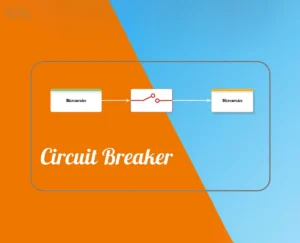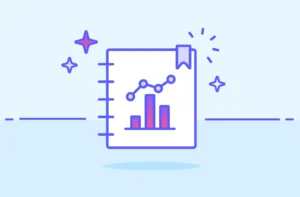AI in finance has evolved from a futuristic concept to the backbone of modern financial services, redefining how institutions manage risk, detect fraud, and execute trades. The integration of artificial intelligence delivers unprecedented accuracy, speed, and scalability across capital markets, banking, and insurance. Nearly half of all financial firms now leverage AI for risk management and fraud monitoring, with leaders deploying twice as many AI use cases as their peers.
This seismic shift isn’t just about efficiency; it’s about survival in a landscape where data breaches cost millions and real-time decision-making separates winners from laggards. For technology leaders, software architects, and AI practitioners, mastering these tools isn’t optional—it’s essential. Specialized education, such as courses focusing on Software Engineering, Generative AI, and Agentic AI, bridges the gap between theory and real-world impact. With faculty who are industry veterans and strong ties to the fintech ecosystem, such programs prepare graduates to architect and deploy the next generation of intelligent financial systems.
Background: The Evolution of AI in Financial Risk Management and Trading
Traditionally, financial risk management relied on static models and manual processes—slow, reactive, and prone to human error. Credit scoring, for example, was limited to a handful of data points, often missing critical signals from alternative sources like utility payments or social media behavior. Trading strategies followed similar constraints, with human traders unable to process the sheer volume and velocity of market data.
The advent of machine learning and generative AI has transformed this paradigm. Today, AI systems analyze vast, real-time datasets—transaction histories, device usage, geolocation, even online behavior—to deliver nuanced risk assessments and predictive insights. Fraud detection algorithms now flag suspicious activity before damage occurs, while algorithmic trading platforms execute thousands of trades per second, optimizing portfolios with minimal human intervention.
This evolution isn’t just technical—it’s cultural. Risk is no longer something to be managed after the fact; it’s anticipated, modeled, and mitigated proactively. Institutions that fail to adapt risk obsolescence, while those embracing AI gain a durable competitive edge.
Latest Trends and Tools in AI-Driven Finance
Real-Time Fraud Detection and Prevention
With 65% of financial companies reporting cyberattacks, AI has become the frontline defense against fraud. Systems like those deployed by Mastercard analyze customer behavior in real time, instantly flagging anomalies—unusual purchase locations, sudden transfer spikes—and blocking fraudulent transactions before they clear. These models continuously learn from new data, staying ahead of increasingly sophisticated threats.
AI-Powered Risk Assessment and Credit Scoring
Credit risk modeling has shifted from static scores to dynamic, holistic profiles. AI evaluates not just traditional credit history, but also alternative data—utility payments, mobile activity, even social signals—to identify trustworthy borrowers who might be overlooked by legacy systems. Companies like Equifax now generate more accurate scores and actionable recommendations for borrowers, reducing defaults and expanding access to credit.
Algorithmic Trading and Robo-Advisors
Algorithmic trading platforms leverage deep learning to parse market conditions, historical trends, and news sentiment, executing trades at speeds and scales impossible for humans. Robo-advisors use similar technology to offer personalized investment strategies, adjusting portfolios in real time based on client goals and risk tolerance. The result? Enhanced client satisfaction, retention, and a measurable edge in volatile markets.
AI-Driven Compliance and Regulatory Reporting
Regulatory compliance is another area transformed by AI. Natural language processing (NLP) automates document review, while generative AI streamlines reporting and audit trails. These tools not only reduce operational costs but also minimize the risk of regulatory missteps—a critical advantage in an era of tightening financial oversight.
Advanced Tactics for Success in AI-Enabled Finance
Building a Multidimensional AI Risk Framework
Successful AI deployment in finance requires more than cutting-edge algorithms. Organizations must:
- Define specific use cases—Start with targeted workflows like real-time risk alerts or claims automation to demonstrate ROI and avoid scattered, unfocused deployments.
- Strengthen data integrity—Encrypt data at rest and in transit, anonymize sensitive information, and enforce strict access controls to comply with GDPR, CCPA, and Basel III.
- Implement continuous monitoring—Detect and mitigate model bias, hallucinations, and drift to maintain accuracy and fairness over time.
- Adopt a human-in-the-loop approach—Combine AI’s speed with human judgment for critical decisions, ensuring accountability and ethical oversight.
Leveraging Generative AI for Operational Efficiency
Generative AI is automating manual processes—document processing, customer onboarding, compliance tasks—freeing teams to focus on strategic initiatives. Conversational AI and NLP are enhancing customer engagement, delivering faster, more personalized interactions at scale.
Integrating Alternative Data Sources
The most advanced institutions are tapping into non-traditional data—social media activity, geolocation, device usage—to uncover hidden risks and opportunities. This “thick data” approach complements traditional analytics, offering a 360-degree view of customer behavior and market trends.
The Power of Education and Community in Fintech AI
Beyond technology, the rise of AI in finance is fueled by a vibrant community of practitioners, thought leaders, and educators. Real-world case studies, student success stories, and faculty bios (like those featured in specialized AI courses) humanize the tech, demonstrating its impact on careers and businesses. Sharing these narratives—through blogs, webinars, and industry partnerships—builds trust and inspires the next generation of fintech innovators.
Business Case Study: AI Transformation at a Global Bank
Brand: A leading multinational bank (name anonymized for confidentiality)
Challenge: The bank faced rising fraud losses, slow credit approvals, and mounting compliance costs. Legacy systems couldn’t keep pace with real-time threats or customer expectations.
Tactics: The bank deployed an AI-powered risk management platform integrating fraud detection, credit scoring, and compliance automation. It trained models on both traditional and alternative data, implemented continuous monitoring for bias, and maintained human oversight for high-stakes decisions.
Results: Fraud incidents dropped by 40% within a year. Credit approval times fell from 48 hours to under 10 minutes. Compliance costs were cut by 30%, and customer satisfaction scores improved significantly. The bank’s AI team, many of whom had upskilled through industry-aligned programs, became internal champions for further innovation.
Actionable Tips for AI Practitioners in Finance
- Start small, think big—Pilot AI solutions in high-impact areas like fraud detection or document automation, then scale based on proven results.
- Invest in data governance—Clean, secure, and well-labeled data is the foundation of effective AI.
- Embrace continuous learning—AI models require regular retraining and validation to stay accurate and fair.
- Foster cross-functional collaboration—Bring together data scientists, risk managers, compliance officers, and business leaders to align AI initiatives with strategic goals.
- Prioritize explainability—Use interpretable models and documentation to build trust with regulators, customers, and internal stakeholders.
Conclusion
AI in finance is transforming risk management, trading, and compliance at an unprecedented pace, offering institutions the tools to anticipate threats, personalize services, and operate at scale. For technology leaders and aspiring practitioners, mastering these innovations is both a challenge and an opportunity. Specialized education programs, such as those focusing on Software Engineering, Generative AI, and Agentic AI, stand at the intersection of education and industry, preparing graduates to architect the intelligent financial systems of tomorrow. With hands-on projects, industry partnerships, and faculty who’ve been there, these programs equip the next generation of fintech architects to not just understand AI in finance, but to redefine it.
Ready to build your future in AI-driven finance? Explore the opportunities today and join the next generation of fintech innovators.
FAQs
How is AI used in financial risk management?
AI analyzes vast, real-time datasets to predict and mitigate risks—from credit defaults to fraudulent transactions—enabling proactive, data-driven decision-making. This shifts risk management from reactive to anticipatory, giving firms a competitive edge.
What are AI trading algorithms?
AI trading algorithms use machine learning to parse market data, execute trades, and optimize portfolios at speeds and scales beyond human capability, often resulting in higher returns and reduced volatility.
How does fintech AI improve fraud detection?
Fintech AI monitors transactions in real time, identifying anomalies and suspicious patterns instantly. This allows institutions to block fraudulent activity before it causes harm, significantly reducing losses.
What is AI-driven compliance in finance?
AI-driven compliance automates regulatory reporting, document review, and audit trails using natural language processing and generative AI, reducing manual effort and minimizing compliance risk.
How does AI enhance credit risk modeling?
AI credit risk models incorporate traditional and alternative data—such as utility payments, mobile activity, and online behavior—to deliver more accurate, holistic assessments of borrower risk.
Why choose industry-aligned education for AI in finance?
Industry-aligned education offers hands-on, AI-powered learning with faculty who are active in the fintech scene, providing direct pathways to internships and placements with leading fintech firms and banks. This curriculum goes beyond theory, offering tangible outcomes and job readiness from day one.










